Installing a door stopper hinge is a simple yet effective way to prevent damage to walls, furniture, and the door itself. These devices attach directly to the door hinge and provide a cushioned surface for the door to rest against when opening and closing. Whether you’re protecting your walls from dents and scratches or ensuring that the door doesn’t swing too far and cause damage, installing a door stopper hinge is a practical solution.

In this article, we’ll explore step-by-step instructions and best practices for how to install door stopper hinge. From selecting the right type of hinge to positioning it correctly and securing it in place, you’ll learn everything you need to know to successfully install a door stopper hinge and protect your home or office from unnecessary damage.
The Importance of Door Stopper Hinges
The importance of door stopper hinges extends beyond mere protection for walls and doors; they play a crucial role in maintaining the integrity and appearance of your living or working space. Each time a door is swung open without restraint, the risk of damage escalates—not just to the wall or the door, but also to any nearby furniture or decorative items. Over time, these minor damages can accumulate, leading to costly repairs or replacements.
Furthermore, door stopper hinges contribute to the safety of the environment, particularly in homes with young children or pets, by preventing doors from slamming shut due to drafts or strong winds. By installing a door stopper hinge, you effectively mitigate these risks, ensuring that your space remains safe, functional, and aesthetically pleasing.
Proper Installation for Effective Door Protection
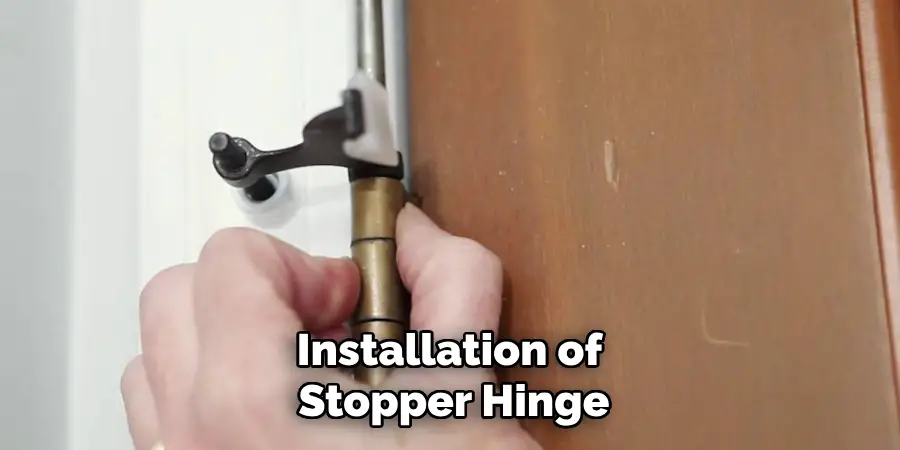
For your door stopper hinge to provide maximum protection and efficiency, proper installation is key. Here’s a step-by-step guide to ensure that you install your door stopper hinge correctly:
- Select the Correct Type of Door Stopper Hinge: Before installation, make sure you have the right type of door stopper hinge for your door and frame. There are various models available, so choose one that suits your door size, weight, and the desired range of motion.
- Gather Necessary Tools: Typically, installing a door stopper hinge requires a screwdriver, a drill with the appropriate size bit, and possibly a hammer. Having all the necessary tools on hand before starting will make the installation process smoother.
- Mark the Placement: Decide where on the door or frame the hinge will be most effective. It’s generally recommended to install the door stopper hinge at a midway point along the edge of the door or on the top corner opposite the door handle for optimum efficiency.
- Drill Pilot Holes (if necessary): If your door stopper hinge includes screws for mounting, drill pilot holes where you’ve marked the placement. Ensure these holes are smaller than the screws to maintain a tight fit.
- Secure the Hinge in Place: Position the door stopper hinge on your marked spot and begin screwing it in place. If it’s a hinge pin door stopper, you may need to remove the existing hinge pin, position the door stopper, and then replace the hinge pin through the stopper and hinge.
- Test the Door Stopper: Once installed, gently open the door to ensure the stopper prevents the door from hitting the wall or any surrounding furniture. Adjust the tension or angle if your model allows for it to achieve the desired result.
By following these steps, you can efficiently install a door stopper hinge and significantly reduce the risk of damage to your doors, walls, and nearby objects. Remember, taking the time to install your door stopper hinge correctly is an investment in protecting your property and maintaining a safe environment.
Different Types of Door Stopper Hinges Available

When considering the installation of a door stopper hinge, it’s important to understand the different types available in the market, as each type serves a unique purpose and fits specific door configurations. Here is a brief overview of the most common types of door stopper hinges:
- Hinge Pin Door Stoppers: These are among the most popular and easiest to install. Designed to fit into the existing door hinge, they require no drilling into the door or wall. Hinge pin door stoppers are ideal for controlling the opening angle of the door and are easily adjustable.
- Magnetic Door Stoppers: Magnetic door stoppers not only prevent the door from hitting the wall but can also hold the door open. They consist of two parts: one attaches to the door, and the other to the wall or floor. When the door is opened wide enough, the magnetic fields attract, holding the door in an open position.
- Kickdown Door Stoppers: These stoppers attach to the bottom of the door, featuring a manually operated lever that ‘kicks down’ to hold the door open at a desired angle. By pressing the lever down with your foot, you can easily control when the door stays open or closed.
- Floor-Mounted Dome Door Stoppers: Floor-mounted stoppers are screwed directly into the floor and are positioned to catch the door before it can hit the wall. They work well on all types of flooring but require precise placement and installation.
- Wall Bumper Door Stoppers: Unlike traditional hinge-mounted stoppers, wall bumpers are installed on the wall at the point where the doorknob would impact the surface. While not a hinge-based solution, wall bumpers are often used in conjunction with door stopper hinges for maximum protection.
- Spring Stop Door Stoppers: These are lightweight and affordable options that screw directly into the baseboard or the lower part of the wall. They have a spring mechanism that absorbs the impact of the door, preventing damage. While effective, they may not offer as much control over door movement as hinge-mounted options.
Each type of door stopper hinge serves the primary function of protecting your space from door-related damage but differs in installation, appearance, and additional features such as holding the door open. Choosing the right type depends on your specific needs, door type, and aesthetic preferences.
Selecting the Right Door Stopper Hinge
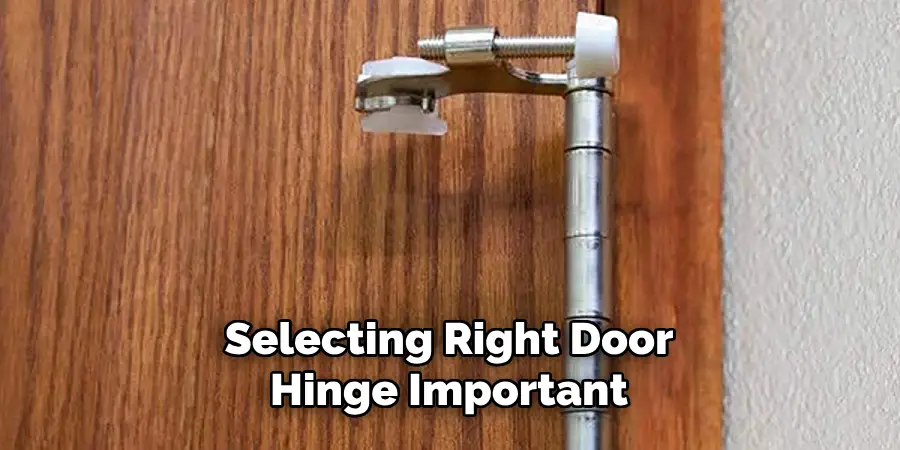
Choosing the ideal door stopper hinge for your home or office involves considering several key factors to ensure you select a model that meets your needs for functionality, aesthetics, and installation requirements. Here are several aspects to keep in mind during your selection process:
- Assess Your Door’s Needs: Evaluate the door’s size, weight, and how frequently it is used. Heavier doors or those subject to high traffic may benefit from more robust hinge types, such as hinge pin or kickdown door stoppers.
- Consider the Installation Process: Reflect on whether you are looking for a DIY-friendly option like hinge pin door stoppers or if you are willing to undertake a more complex installation, such as that required for floor-mounted or magnetic models.
- Think About Aesthetics: Door stoppers are not just functional; they also contribute to the room’s overall look. Choose a style and finish that complement your door’s design and the room’s decor.
- Space Limitations: If space around the door is limited, wall-mounted or kickdown door stoppers might not be the best options. Instead, hinge pin or spring stop door stoppers could offer a compact solution.
- Functionality Preferences: Decide if you need the door to stay open at times or if preventing wall damage is your sole concern. Magnetic door stoppers can offer the best of both worlds but require a correct alignment between the door and wall components.
- Maintenance and Durability: Opt for door stoppers made from high-quality materials to ensure longevity and minimal maintenance, especially in high-traffic areas.
By carefully considering these factors, you can choose a door stopper hinge that not only protects your property but also enhances the functionality and style of your space.
Factors to Consider When Choosing a Door Stopper Hinge
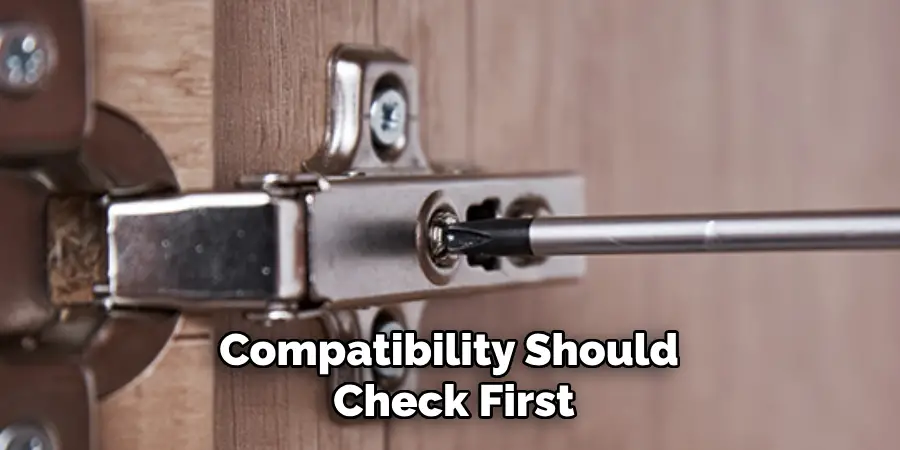
Selecting the right door stopper hinge requires thoughtful consideration of various factors to match your specific needs and environmental conditions. Here are some key elements to evaluate:
- Compatibility: Ensure the door stopper hinge is compatible with your door type and hinge model. It’s crucial to verify whether the stopper can be installed with your existing door setup without requiring significant alterations.
- Material and Finish: The material of the door stopper plays a significant role in its durability, resistance to wear, and overall appearance. Common materials include metal (such as brass, stainless steel, or zinc) and plastic. The finish should not only match your door and hardware but also withstand the environmental conditions it will be exposed to.
- Ease of Installation: Consider how easy it is to install the door stopper. Some models may require professional installation or specialized tools, while others can be easily installed with basic DIY skills. Understanding the installation process will help you gauge the overall cost and time investment required.
- Adjustability and Flexibility: Some door stoppers offer adjustable stop angles or the ability to hold the door at multiple open positions. This flexibility can be particularly useful in adapting to various needs or changes in space usage over time.
- Safety Features: Especially in homes with small children or pets, it’s important to consider the safety features of a door stopper. Look for designs that minimize choking hazards, sharp edges, or pinch points.
- Cost vs. Quality: While cost is always a consideration, it’s important to balance budget constraints with the quality and longevity of the door stopper. Investing in a slightly more expensive model that offers better durability and functionality may save money and hassle in the long run.
- Brand Reputation and Reviews: Finally, researching the brand reputation and reading reviews from other users can provide valuable insight into the performance and reliability of the door stopper. This can help you make an informed decision and select a product that meets or exceeds your expectations.
By carefully evaluating these factors, you can select a door stopper hinge that offers the perfect blend of form, function, and durability, ensuring your doors operate smoothly and efficiently while protecting your space from damage.
10 Methods How to Install Door Stopper Hinge
1. Selecting the Right Door Stopper Hinge:
Before beginning the installation process, it’s essential to choose the appropriate door stopper hinge for your needs. Consider factors such as the type of door (interior or exterior), the material of the door (wood, metal, etc.), and the desired style of the hinge (spring-mounted, hinge pin, or baseboard-mounted).
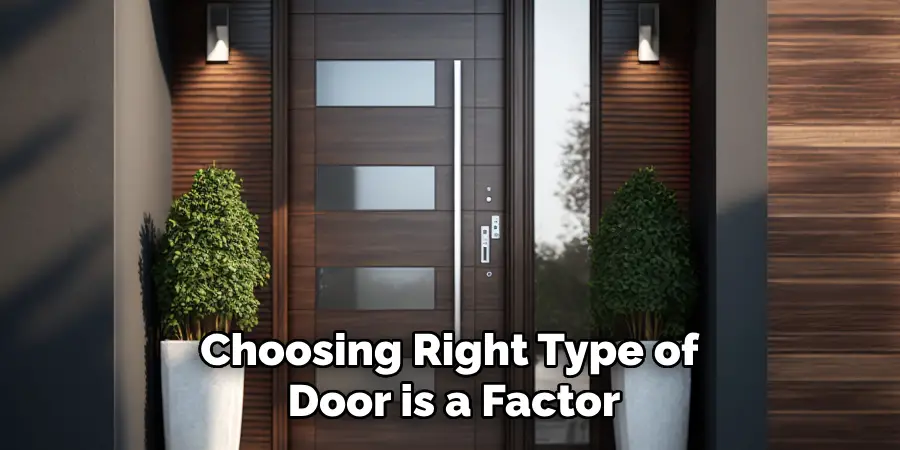
2. Gathering Necessary Tools and Materials:
Collect all the tools and materials required for the installation process. This typically includes a door stopper hinge kit (which may include the hinge, screws, and mounting hardware), a drill, screwdriver, measuring tape, pencil, and possibly a stud finder if mounting on a wall.
3. Determining the Installation Location:
Decide where you want to install the door stopper hinge. Common locations include the baseboard or the door itself. Measure the desired location and mark it with a pencil.
4. Preparation and Marking:
Before drilling any holes, ensure that the surface is clean and free of debris. Use a pencil to mark the exact placement of the hinge on the door or baseboard. Use a level to ensure that the hinge will be installed straight.
5. Drilling Pilot Holes:
Using a drill bit slightly smaller than the screws provided with the hinge, drill pilot holes at the marked locations. Pilot holes help prevent splitting of the wood and ensure a secure fit for the screws.
6. Attaching the Hinge:
Align the hinge with the pilot holes and use a screwdriver to attach it firmly to the door or baseboard using the provided screws. Ensure that the hinge is flush with the surface and securely attached.
7. Testing the Door Stopper:
Once the hinge is securely attached, test the door stopper to ensure that it functions correctly. Open and close the door several times to verify that the hinge prevents the door from hitting the wall or adjacent surface.
8. Adjustment and Alignment:
If necessary, make any adjustments to the door stopper hinge to ensure proper alignment and functionality. This may involve tightening or loosening screws or repositioning the hinge slightly.
9. Mounting Multiple Hinges:
For heavier doors or doors with a tendency to swing forcefully, consider installing multiple door stopper hinges at different heights along the door or baseboard. This provides added protection and stability.
10. Final Inspection and Finishing Touches:
Once the installation is complete, inspect the door stopper hinge to ensure that it is securely attached and functioning correctly. Make any final adjustments as needed. If desired, paint or stain the hinge to match the surrounding decor for a seamless finish.
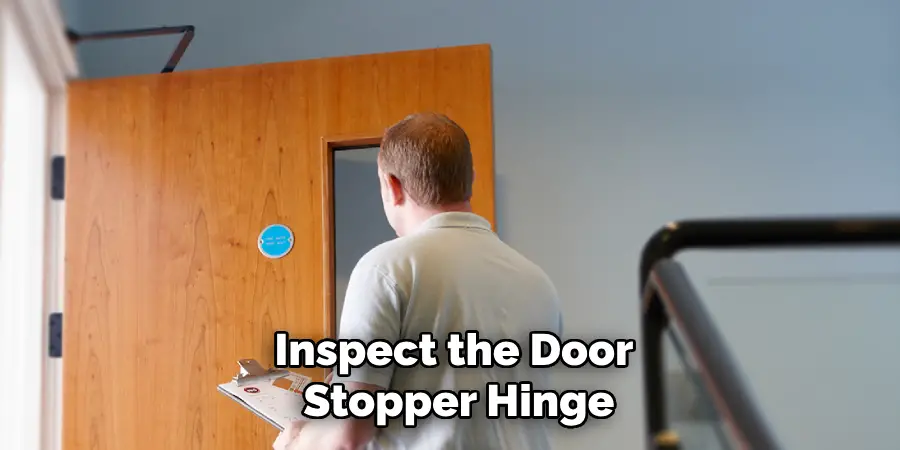
Comparison of Hinge Types
When selecting a door stopper hinge, understanding the differences among hinge types is crucial for making an informed decision. Here’s a brief comparison to help:
- Hinge Pin Door Stoppers are ideal for interior doors and offer easy installation, fitting into the existing hinge of the door. Their discreet placement makes them a go-to for maintaining aesthetics. However, their stopping power might not be sufficient for heavier doors.
- Magnetic Door Stoppers stand out for their dual functionality; not only do they stop the door, but they can also hold it open. This makes them suitable for doors that need to stay open regularly. Their installation is more involved, requiring precise alignment, but the clean look and added functionality often justify the effort.
- Floor-Mounted Door Stoppers provide robust door stopping capability, making them suitable for heavier doors or high-traffic areas. They require precise placement on the floor, which might not be feasible in all spaces due to flooring material or design considerations.
- Wall-Mounted Door Stoppers offer a solution that prevents door handle damage to walls, ideal for smaller spaces or where floor-mounted options are impractical. Installation is straightforward but drilling into the wall is necessary, which might not be desirable in all settings.
- Kickdown Door Stoppers allow for hands-free operation, being easily flipped down with a foot to hold the door open. Their versatility makes them a popular choice, though they may not be as durable under constant high traffic or heavy use.
- Spring Stop Door Stoppers are the most cost-effective and easiest to install, making them suitable for light, internal doors. While they offer basic protection and functionality, they might lack the durability and strength needed for exterior or heavier doors.
Choosing the right hinge type involves weighing these differences against the specific needs of your space, the type of doors you have, and your aesthetic preferences. Each type has its unique advantages and potential drawbacks, making it essential to consider what aligns best with your requirements.
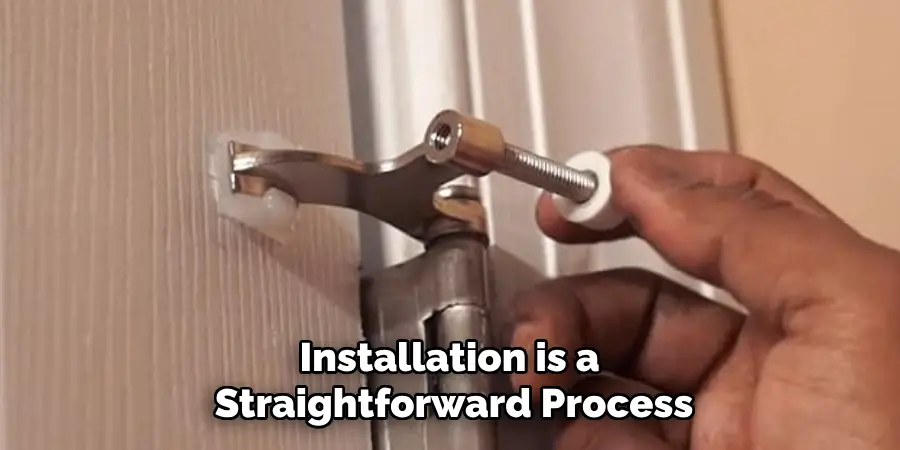
Conclusion
In conclusion, installing a door stopper hinge is a straightforward process that can provide significant benefits in terms of protecting your walls, furniture, and doors from damage. By following the step-by-step instructions outlined in this article, you can successfully install a door stopper hinge and enjoy the peace of mind that comes with knowing your home or office is safeguarded against unnecessary wear and tear.
Whether you’re a DIY enthusiast or a novice homeowner, installing a door stopper hinge is a practical and cost-effective solution that can make a big difference in maintaining the appearance and functionality of your space. Thanks for reading, and we hope this has given you some inspiration on how to install door stopper hinge!

